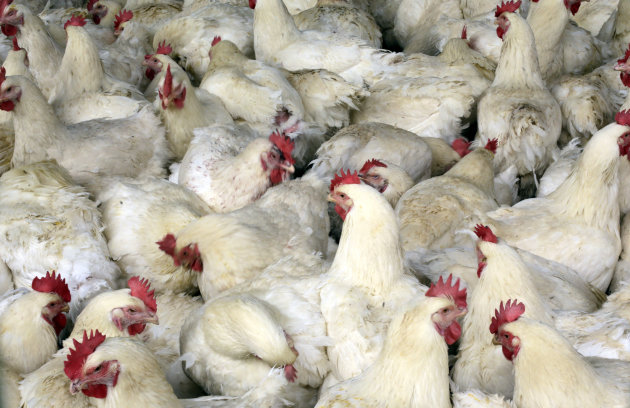Wednesday, September 4, 2013
Advertisement Advertisement Don't Trust a Chicken Nugget That's Visited China
Would you willingly eat a chicken nuggets processed in a country that has no intention of meeting U.S. food-safety standards? Most Americans likely wouldn't.
That may explain why the U.S. Department of Agriculture waited until Friday -- the day before a long holiday weekend -- to announce that it had ended a ban on Chinese chicken imports by approving four Chinese poultry processors to ship processed ("heat-treated/cooked") chicken to the U.S. The report on the approved poultry plants noted that the audit set out to "to determine whether the People's Republic of China's (PRC) food safety system governing poultry processing remains equivalent to that of the United States (U.S.), with the ability to produce products that are safe, wholesome, unadulterated, and properly labeled." Needless to say, the Chinese plants passed.
Initially, at least, the chickens will be slaughtered in the U.S. (or another nation that's allowed to export slaughtered chicken to the U.S.), then shipped to China for processing and re-export. That's the good news. The bad news is that, according to the New York Times, no USDA inspectors will be present in the Chinese processing plants (despite the fact that China has never before been allowed to export chicken to the U.S.), thus offering consumers no guarantees where the processed chickens were in fact slaughtered. Even worse, because the birds will be processed, the USDA will not require point-of-origin labeling (under USDA rules, foods that have been cooked aren't subject to point-of-origin labeling). In other words: Consumers will have no way to tell if those chicken nuggets in the supermarket freezer were processed in the U.S. or in China.
That's a big problem. For more than a decade, China has earned a reputation as one of the world's worst food-safety offenders. In just the last year, consumers have been confronted with a bird flu outbreak, news of sales of 46-year-old chicken feet and reports of poisonous fake mutton. These are not isolated incidents, but rather the most spectacular instances of a crisis that has become so severe that some consumers now smuggle quantities of infant milk formula from foreign countries into China so as to avoid buying potentially tainted Chinese dairy products.
The Chinese government, se
nsitive to people's beliefs that it isn't doing enough to protect their food supply, has made a point of regular, ineffective crackdowns on food-safety violators. Yet in July, when a senior Chinese policy maker involved in developing new food safety standards was asked at a press conference if and when it would meet developed-world standards, he conceded that it would, instead, have to meet China's "national condition" as a developing country. In other words: China's food supply cannot meet USDA standards.
China's "national condition" has already seemingly had a harmful effect on its poultry – and on U.S. consumers unlucky enough to have bought it for their pets. (The U.S. allows chicken imports for animal consumption.) As of December 2012, the U.S. Food and Drug Administration reported that it had received reports of 501 dog deaths (and thousands of dog sicknesses), many seemingly from chicken jerky treats manufactured in China, dating back to 2007. But the department has so far been unable to pinpoint a cause for the problem, and the Chinese have been unwilling to volunteer one.
What was the USDA thinking when it decided to sign-off on Chinese processed chicken exports for humans? Probably not the best interest of American consumers. Rather, U.S. beef and poultry producers have long sought to have the restrictions lifted in hope of encouraging Beijing to reciprocate and open its huge market to more U.S. meat exports (U.S. beef is currently banned for import into China). It's a reasonable goal, and one that the USDA should pursue -- just not at the expense of a safe U.S. food supply.
To Read More Click Here:
Subscribe to:
Post Comments (Atom)

No comments:
Post a Comment